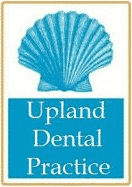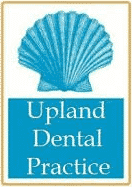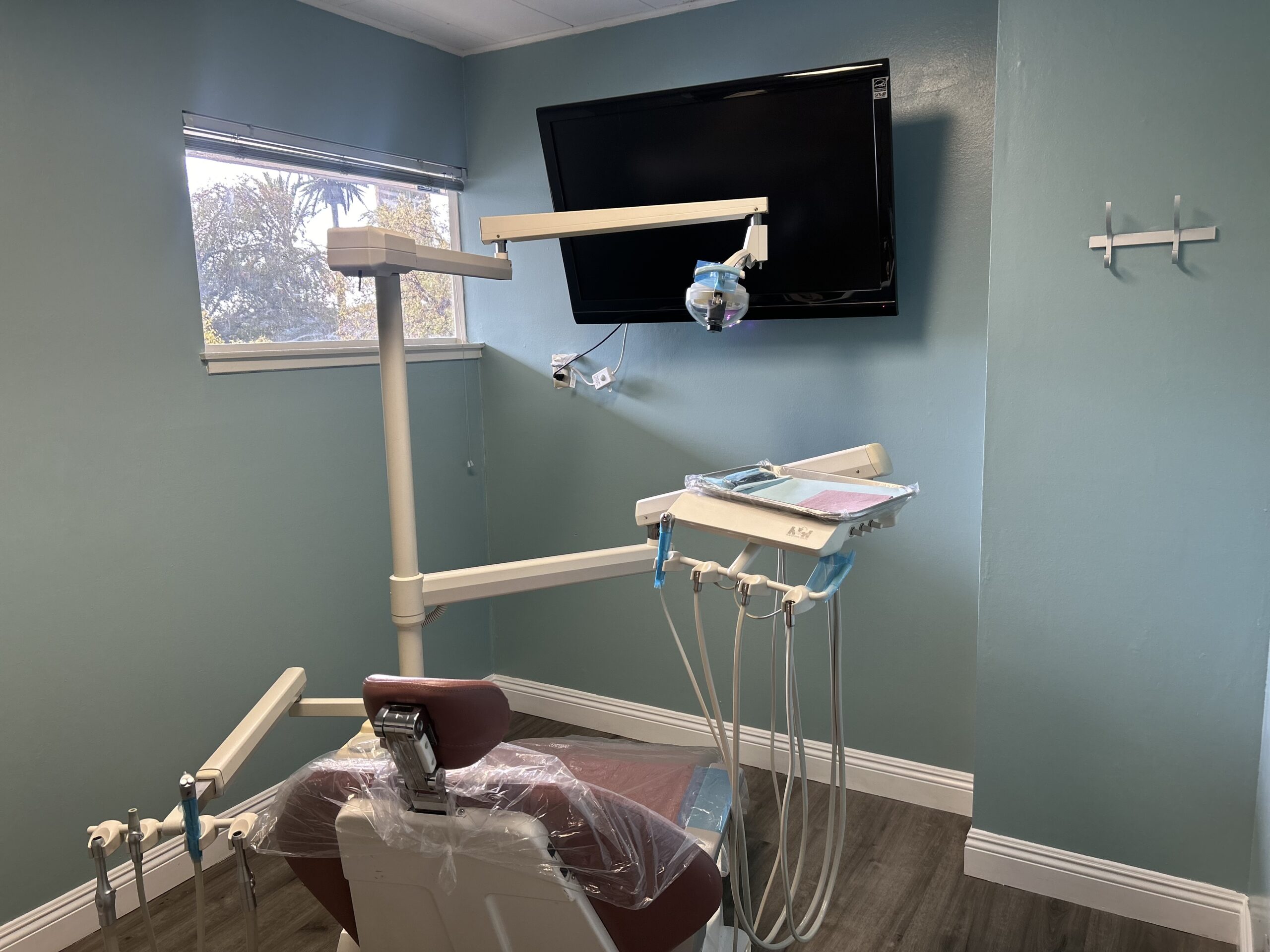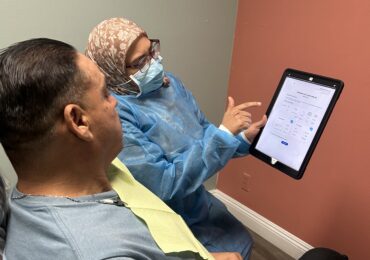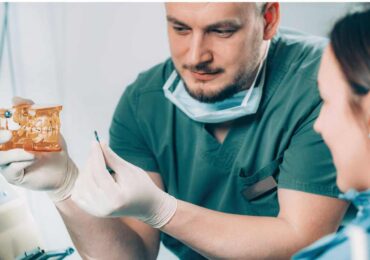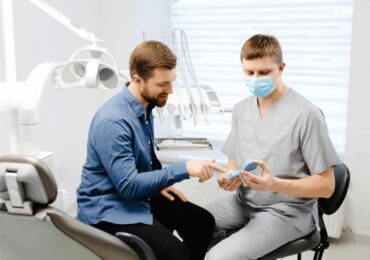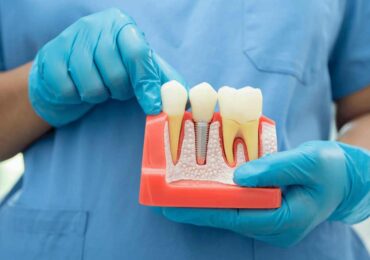While the likelihood of infection after tooth extraction ranges between 0.9% and 5.8%, cases do occur. Chronic infection promotes several life-threatening diseases that elevate both morbidity and mortality rates. It is therefore critical to understand and effectively manage infection after tooth extraction.
This article discusses different signs of infection following tooth extraction to help you recognize potential issues early. We will also discuss risk factors and long-term complications, stressing the importance of prompt treatment. Additionally, we will offer helpful tips for an easier healing process after following tooth extraction.
Signs of Infection After Tooth Extraction
Signs of infection after a tooth extraction can appear quickly, usually within two days. You may feel pain, swelling, redness, and foul-smelling discharge from the area.
If left untreated, an infection can last from days to weeks. While minor infections might just heal on their own, the most serious ones require dental help to heal properly.
Let’s examine each of these signs.
Excessive or Prolonged Bleeding
Excessive bleeding after a tooth extraction is one of the first signs of potential trouble. While some bleeding is normal, it should stop within a day. If bleeding persists longer than this, especially beyond 8 to 12 hours, it might suggest an infection.
Swelling and Redness
Swelling and redness in the area where a tooth was removed is normal, usually it last 24 to 48 hours. It could indicate an infection if they don’t go down during that time.
After a tooth extraction, the spot where the tooth was taken out is at risk of getting infected by bacteria. If the bacteria infect the gums, they can cause swelling and a red color around the wound. In severe cases, the infection might spread to the bone or even enter the bloodstream, leading to a condition called sepsis, which can affect the function of vital organs.
Persistent Pain or Discomfort
After a tooth extraction, it’s common to experience pain and discomfort, which typically lasts for two to three days, up to a week. The pain and discomfort is often accompanied by swelling and redness of the gums. If these sensations persist longer than expected, it could indicate the presence of an infection.
Foul Odor or Taste
A poor taste or odor following tooth extraction is unusual for most people. If you experience it, it may indicate an infection. When bacteria get into the wound and create pus, it infects your gums. Pus is a thick, yellowish, or greenish liquid that forms when bacteria enter a wound and cause an infection. The bad taste or odor in your mouth is brought on by germs, tissue fragments, and dead white blood cells found in this pus.
Elevated Body Temperature
One common sign of infection after a tooth extraction is having a fever or higher body temperature. When your body fights an infection, it releases pyrogens that tell your brain to raise your temperature.
Additional signs of infection after tooth extraction may include:
- swollen lymph nodes in the neck or jaw area
- persistent bad breath
- a feeling of warmth around the extraction site
Risk Factors
Antibiotics are prescribed by dentists following tooth extraction to avoid infection. However, without proper post-operative care, you may still develop infections.
A study conducted to determine if poor oral hygiene are risk factor for developing bacteremia (the presence of bacteria in your blood) after single-tooth extraction revealed that bacteremia is associated with poor oral hygiene and gingival bleeding after tooth brushing.
Smoking or a particular medical condition in your immune system may also lead to a greater possibility of infection.
Here are some factors that can increase the risk of infection after a tooth extraction.
Poor Oral Hygiene Practices
Skipping regular brushing and flossing can lead to bacteria and plaque buildup in your mouth. These particles may enter the area where the tooth was extracted. You may experience pain, swelling, and pus that may lead to infection.
Make sure to brush and floss your teeth twice a day to prevent diseases brought on by poor oral hygiene. Use a specific mouthwash or rinse your mouth three times a day with warm saltwater.
Smoking and Tobacco Use
Smoking and tobacco usage can have a significant impact on the healing process of the extracted area. It hinders the oxygen and blood flow to the wound, delaying its healing process. It also encourages bacterial growth which may lead to infection.
Smoking is bad for your oral health. In the long run, giving up smoking improves not just the healing process but also dental health in general.
Medical Conditions and Compromised Immune System
One important tool in the fight against illness and the development of infection is the immune system. Maintain a healthy immune system by eating a balanced diet, getting enough sleep, and drinking lots of water. Along with these precautions, you should always wash your hands, stay away from sick people, and wear a mask in public.
Complications and Long-Term Effects
A study indicates that 13% of adult dental visits are related to infections. These infections can result in numerous issues if they are not treated. They may spread to neighboring teeth or the jawbone. Some of them even have the potential to be fatal.
Here are some possible complications and long-term effects:
Dry socket
After having a tooth extracted, an infection or infected socket can interfere with the production of blood clots and make the socket dry. This problem results in severe pain and a delayed healing period when the blood clot in the extraction socket dissolves or becomes displaced, exposing the underlying bones and nerves.
Severe pain, absence of blood clots in the extraction site, and visible bone in the socket are common symptoms that appear two to four days following extraction.
It’s crucial to see your dentist for cleaning and the administration of medicated dressings to treat a dry socket to reduce pain and promote healing. They can also advise you to rinse your mouth with salt water and provide a prescription for painkillers.
Abscess Formation
An abscess, which is characterized by a collection of pus which includes bacteria, dead white blood cells, and tissue particles, may form because of infection following a tooth extraction.
Gum swelling, severe pain, fever, and an unpleasant taste and odor in the mouth are typical symptoms. In addition to causing excruciating pain, an untreated abscess carries a life-threatening risk to adjacent teeth and gums as well as other parts of the body like the jaw and neck.
Your dentist in Upland California, for instance, will usually drain the abscess during treatment, and a root canal may be needed to remove any contaminated tissue.
Spread of Infection to Adjacent Structures
An infection can become potentially fatal if it spreads to other parts of the body such as the jawbone, neck, or sinuses. It can also spread to nearby parts like the gums and teeth. That’s why it is so important to see your dentist at Upland California at once if you notice signs of infection after having a tooth extracted.
Treatment Options for Infection After Tooth Extraction
Infection-related problems after tooth extraction need to be immediately dealt with. It usually takes three days to two weeks to treat extraction sites or infections, while severe infections could take several months to heal.
You may consider the following treatment options to speed up recovery from infections:
Antibiotics and Antimicrobial Rinses
It eliminates bacteria and stops them from multiplying. In the same way, the antimicrobial rinse may eliminate oral bacteria and form a barrier that protects your teeth from acid.
You must take antibiotics for a week or as directed by your dentist. When treating severe oral infections like tooth abscesses, penicillin is frequently advised. It is regarded as the most effective antibiotic available.
Consulting your dentist at Upland for assistance is the best way to obtain antibiotics for infection after tooth extraction. They will examine the situation and prescribe antibiotics.
Pain Management Techniques
After a tooth extraction, there are plenty of pain remedies available to reduce discomfort. The following choices include:
- Over-the-counter painkillers like acetaminophen (Tylenol) or ibuprofen (Advil, Motrin) can help reduce mild to severe pain.
- Stronger painkillers like codeine, hydrocodone, or oxycodone may be prescribed by your dentist or oral surgeon for more severe cases of pain.
- Over-the-counter topical painkillers, such as gels or creams with a benzocaine basis, can be used directly at the extraction site to numb the area and temporarily relieve pain.
- To relieve pain and minimize swelling, apply an ice pack or cold compress on the cheek’s surface close to the extraction site.
- Rinsing your mouth with salt water can help relieve gum discomfort and reduce inflammation.
Professional Guidance is Key for Optimal Treatment
While over-the-counter pain relievers and home remedies can offer some comfort following a tooth extraction infection, seeking professional dental care is the most effective course of action. Your dentist possesses the expertise to accurately diagnose the infection and create a personalized treatment plan tailored to your specific needs.
Why does professional guidance matter?
Self-treating an infection or using pain medication without consulting a dentist can be risky. Dentists can assess the severity of the infection and ensure you receive the appropriate medication and dosage. Additionally, they can guide you with the proper use of pain relievers to avoid potential side effects or interactions with other medications you might be taking.
Practical Tips for Recovery After Tooth Extraction
During the healing phase following a tooth extraction, the following advice might help you.
To minimize pain, you may take prescriptions from your dentist or buy over-the-counter painkillers. Observe the directions provided by your physician or dentist when using prescription painkillers. To reduce the swelling, you can also use cold packs and rinse many times a day with salt water.
For the first several days following the extraction, stick to a soft or liquid diet to promote healing and prevent infection. Include nutritious meals and liquids in your diet to help in healing and boost your immune system.
Oral Hygiene Practices During Recovery
Following a tooth extraction, these simple instructions will help you manage pain, encourage healing, and maintain good dental hygiene.
24–48 Hours
Use ice packs to minimize swelling and use prescribed painkillers as needed. To help your body heal, maintain a soft diet and get plenty of rest.
Days 2–7 Following Extraction
As you gradually incorporate softer foods into your diet, keep using cold packs. Keep away from alcohol, cigarettes, and straws. Rinse your mouth with warm salt water.
1-2 Weeks Following Extraction
Use a toothbrush with soft bristles to gently brush your teeth. Apply antimicrobial mouthwash and refrain from touching the extraction site.
After Two Weeks of Extraction
Schedule follow-up appointments with your dentist and maintain proper oral hygiene habits.
Consult a Dentist in Upland California
Tooth extraction is a common procedure, but it’s important to be proactive about preventing and detecting infection afterward. Early action is key!
If you experience any of the symptoms discussed earlier, don’t wait! Contact our dentists at Upland Dental Practice immediately.
At Upland Dental Practice, your oral health is our top priority. Our experienced team is dedicated to ensuring a smooth recovery after your tooth extraction.
Don’t hesitate to reach out if you have any questions or experience any potential infection symptoms. We’re just a phone call away!
Looking For a Trusted Dentist?
